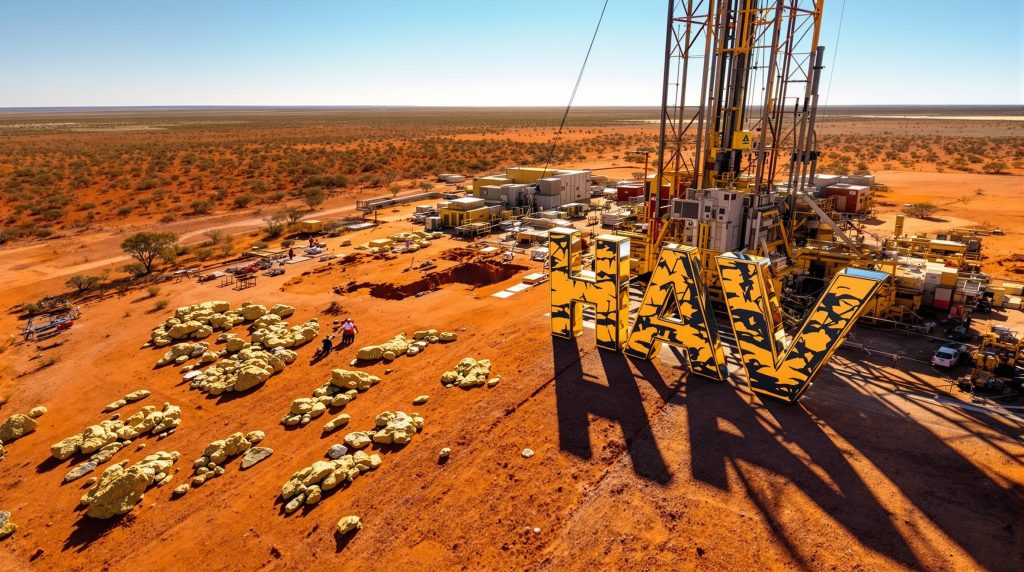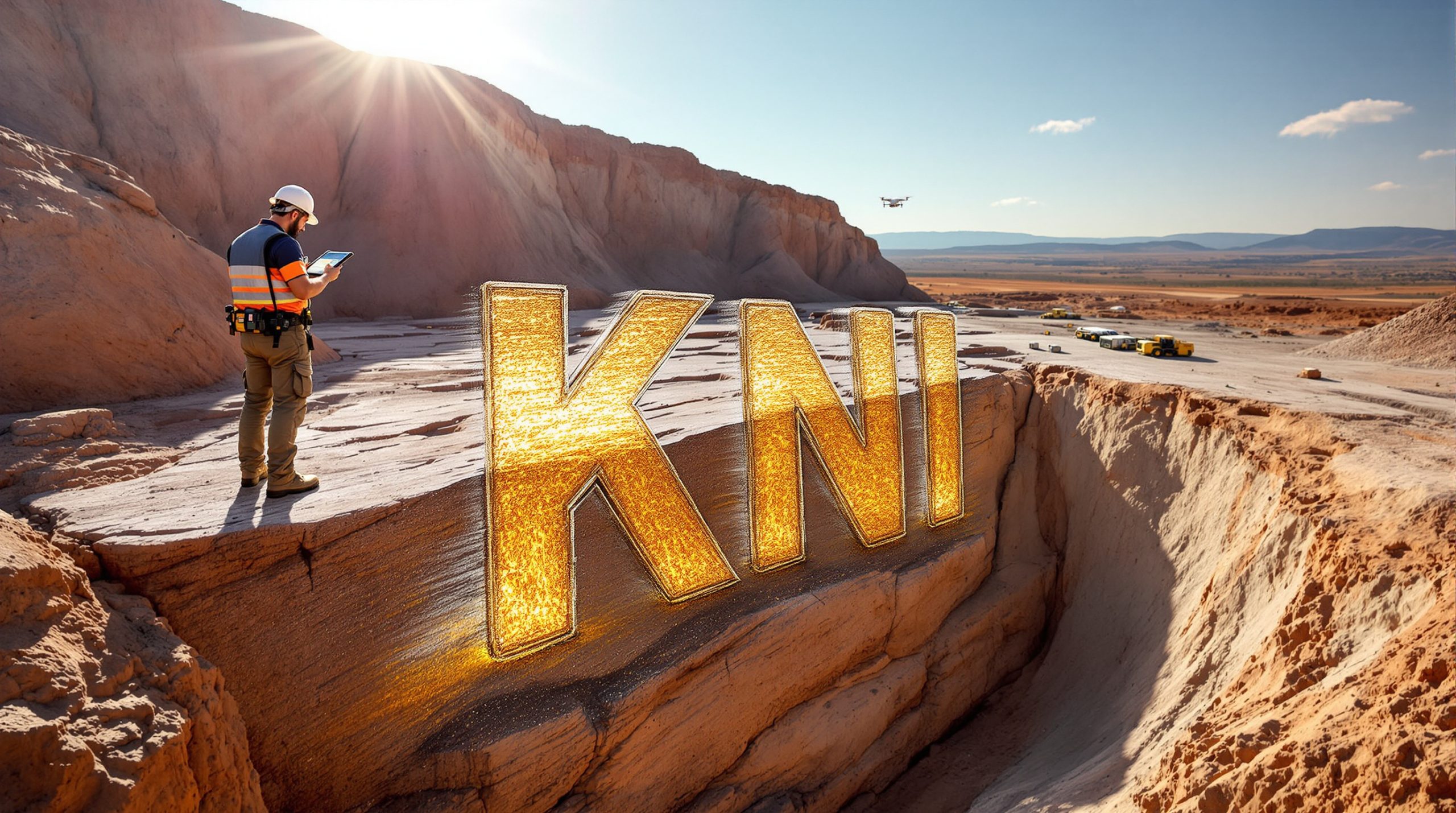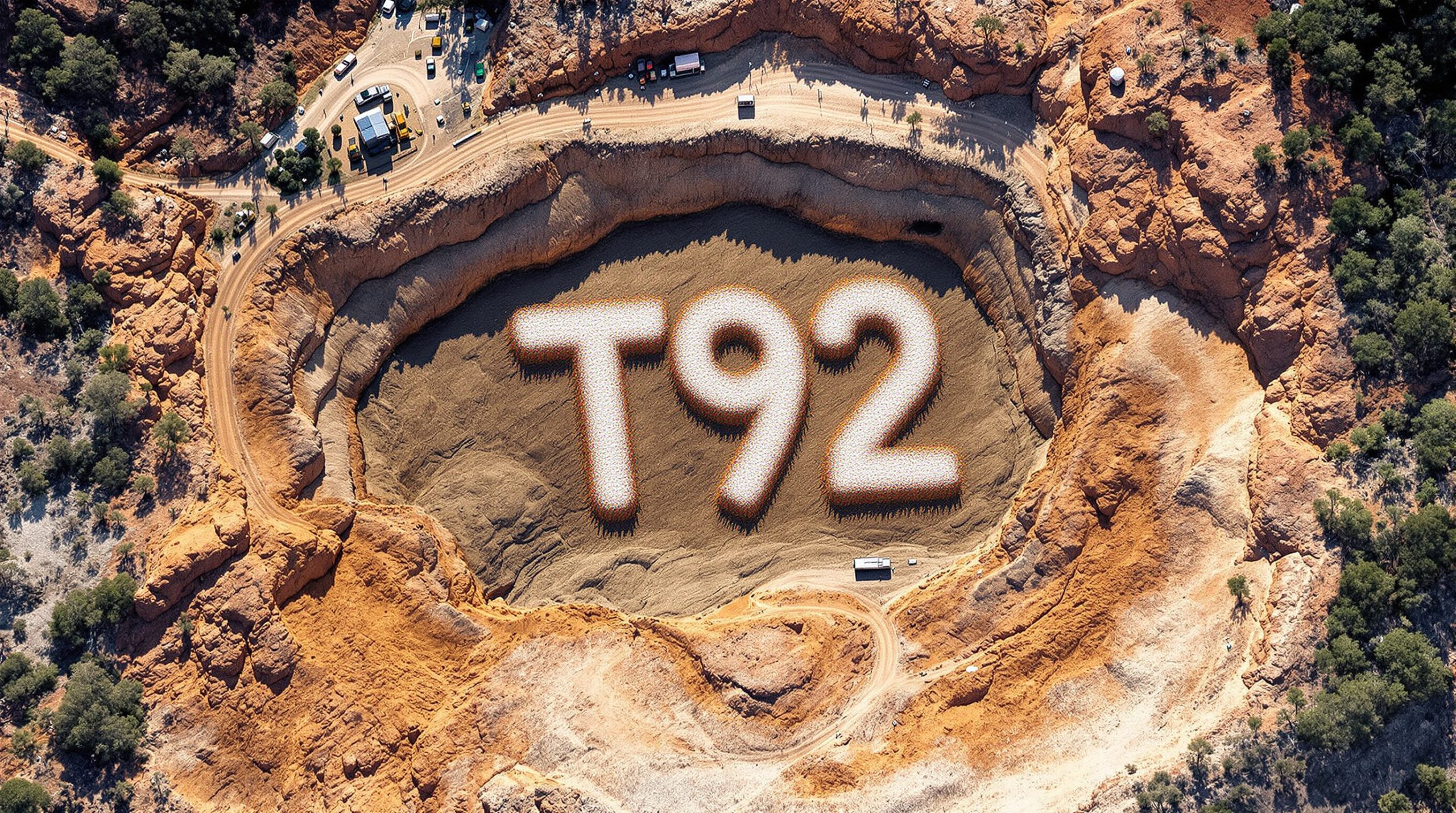Breakthrough Drilling Results Highlight Significant Uranium Mineralization
Havilah Resources (ASX: HAV) has reported outstanding uranium drilling results from its recent exploration program at the Johnson Dam prospect. The highlight intersection returned 8,984 ppm U₃O₈ (uranium oxide) over 1 meter, making it the highest-grade uranium discovery by Havilah Resources Ltd at the prospect to date.
The 9-hole reverse circulation (RC) drilling program successfully intercepted significant uranium mineralization in two holes:
-
KKRC0706: 7 meters of 2,169 ppm U₃O₈ from 108 meters depth, including:
- 4 meters of 3,643 ppm U₃O₈ from 110 meters
- 1 meter of exceptional 8,984 ppm U₃O₈ from 112 meters
-
KKRC0712: 3 meters of 527 ppm U₃O₈ from 119 meters
These results confirm the geological model for Johnson Dam and significantly enhance the prospect's potential to host a substantial hard rock uranium deposit.
"The recent 9-hole RC drilling program has added greatly to the geological knowledge and confirmed the geological model. Future drilling will aim to extend the known uranium mineralized zone and to delineate an initial mineral resource, if feasible," noted Technical Director Dr. Chris Giles.
Beyond Uranium: Multi-Element Mineralization Adds Value
While uranium is the primary focus, several drillholes also revealed promising copper, cobalt, and rare earth element mineralization:
| Hole ID | Intersection | Minerals |
|---|---|---|
| KKRC0711 | 9 meters from 68m | 0.33% copper, 411 ppm cobalt |
| KKRC0712 | 9 meters from 153m | 0.19% copper, 241 ppm cobalt |
| KKRC0713 | 48 meters from surface | 211 ppm neodymium in clay-rich saprolite |
This multi-element profile enhances the economic potential of the Johnson Dam prospect, particularly given the growing demand for critical minerals essential for the clean energy transition.
Understanding Uranium Grades: What Makes This Discovery Significant
Uranium grades are typically reported in parts per million (ppm) of U₃O₈, the most common form of uranium oxide. For context, many operating uranium mines worldwide consider grades of 1,000-2,000 ppm economically viable under favourable conditions.
The 8,984 ppm (nearly 0.9%) intersection at Johnson Dam represents an exceptionally high-grade uranium discovery by Havilah Resources Ltd when compared to global standards. For comparison, Australia's Olympic Dam mine typically produces uranium at grades of around 500-600 ppm as a by-product.
High-grade uranium discoveries are particularly valuable as they:
- Require less material to be processed per pound of uranium produced
- Generally offer lower production costs
- Provide greater flexibility in mining approaches
- Often allow for smaller environmental footprints
Geological Insights and Technical Challenges
The drilling program has provided valuable geological information despite some technical challenges. Seven of the nine holes did not intersect reportable uranium mineralisation due to various factors:
- Drilling complications causing holes to stop short of target depth
- Structural complexity displacing mineralisation
- Intercepting granite where mineralisation was expected
- Pre-determined drill positions due to cultural heritage constraints
The location of the drillholes in relation to surface features provides important context for understanding the mineralisation. The uranium-bearing zones appear to be associated with a geological boundary near a granite contact, with gossan outcrops at surface potentially indicating the presence of underlying mineralisation.
Gossan refers to an iron-rich cap rock that forms from the complete oxidation of underlying sulphide minerals, primarily pyrite in this case. These surface indicators have helped guide the exploration strategy that led to this high-grade uranium discovery by Havilah Resources Ltd.
Future Exploration Strategy
Havilah has outlined a clear path forward for the Johnson Dam prospect:
- Conduct additional cultural heritage surveys to enable more optimal drill locations
- Target extensions of the known uranium mineralised zone
- Focus on delineating an initial mineral resource, if feasible
- Further investigate the associated copper, cobalt, and rare earth elements
The company's exploration strategy is designed to systematically evaluate the prospect's potential, with drilling results so far supporting the geological model that suggests significant discovery upside.
Uranium Market Context: Why This Timing Matters
This discovery comes at a particularly opportune time for the uranium sector. Nuclear power is experiencing renewed interest globally as countries seek low-carbon baseload power sources to meet climate goals. Several factors are currently supporting uranium demand:
- Nuclear power's recognition as a clean energy source in many climate policies
- Extended operational lifespans for existing nuclear plants
- New reactor construction, particularly in China, India, and the Middle East
- Growing interest in small modular reactors (SMRs) for flexible deployment
The supply side has also tightened, with several major mines reducing production in recent years and limited new development projects moving forward. This supply-demand dynamic has created favourable conditions for new uranium discoveries.
Educational Focus: Understanding Uranium Exploration and Development
Uranium exploration differs from many other mineral investigations due to the unique properties of uranium deposits and the specialised detection methods required. Unlike gold or base metals, uranium often cannot be visually identified in drill core or rock samples without specialised equipment.
Exploration Techniques
- Radiometric surveys are commonly used to detect naturally occurring radiation from uranium and its decay products
- Geochemical sampling helps identify uranium anomalies in soil and water
- Geological mapping identifies favourable host rocks and structures
Development Considerations
- Regulatory requirements for uranium projects are typically more stringent than for other commodities
- Environmental and radiation management plans form a critical component of development proposals
- Community engagement is particularly important due to public perceptions about uranium mining
The path from discovery to production for uranium projects often spans 7-10 years due to these additional regulatory requirements, making high-grade discoveries like Johnson Dam particularly valuable as they may justify the extended development timeframe.
Why Investors Should Track Havilah Resources
Havilah Resources presents a compelling investment case based on several key factors:
-
Diversified mineral portfolio: Beyond the high-grade uranium discovery by Havilah Resources Ltd at Johnson Dam, the company's exposure to copper, cobalt, and rare earth elements provides a balanced critical minerals profile.
-
Location advantage: The company's projects are located in South Australia, a mining-friendly jurisdiction with established infrastructure.
-
Technical expertise: The exploration team has demonstrated geological understanding that led to this significant uranium discovery.
-
Growth potential: The Johnson Dam prospect remains open for expansion, with initial high-grade results suggesting considerable upside.
-
Strategic timing: The discovery coincides with improving fundamentals in the uranium market.
For investors seeking exposure to the uranium sector and critical minerals, Havilah Resources represents an emerging opportunity at an early discovery stage. The high-grade nature of the Johnson Dam uranium intercepts positions the company to potentially develop a significant resource with continued exploration success.
Furthermore, as global attention shifts toward securing supply chains for critical minerals, discoveries like Johnson Dam take on additional strategic importance. The combination of uranium with copper, cobalt, and rare earths creates a compelling resource profile aligned with future energy needs.
As with any early-stage mineral exploration, investors should recognise that additional drilling and technical work will be required to fully evaluate the economic potential of the Johnson Dam prospect. However, the initial high-grade uranium results provide an encouraging foundation for future work.
Want to Catch the Next Major Uranium Discovery?
Discovery Alert's proprietary Discovery IQ model provides instant notifications when significant ASX uranium discoveries are announced, helping investors position themselves early in potential market-moving opportunities. Explore how historic discoveries have generated substantial returns by visiting Discovery Alert's dedicated discoveries page.




